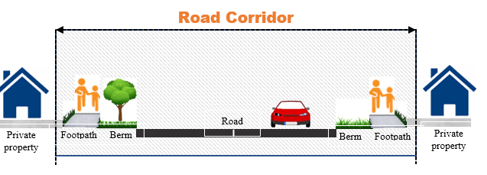Traffic Management Plans
What is a Traffic Management Plan?
A Traffic Management Plan (TMP) details how a safe environment will be created for all road users or pedestrians while works or activities are undertaken on a road corridor.
The plan must detail all signage, temporary traffic controls, detours, and pedestrian/cyclist management, as applicable.
When is a Traffic Management Plan required?
A Traffic Management Plan is required for all activities which are undertaken on our Council’s Road Corridor. This includes, but is not limited to:
- any activities that will alter the surface of the road, footpath or verge,
- maintenance work on essential infrastructure,
- placement of pipes, ducts, or cabinets below or above the road surface,
- temporary work or loading zones,
- construction of new vehicle crossings or maintenance of them, and
- any organised events.
Works such as mowing urban or rural verges are usually excluded.
If you have any concerns, please contact us on 07 868 0200 to discuss specific issues.
What is a Road Corridor?
A Road Corridor is defined as the area of land between the legal boundaries of one property to the boundary of the property on the opposite side of the road. The Road Corridor includes the nature-strip, or berm, and footpath.

Who approves a Traffic Management Plan?
All TMP’s must be submitted via our Council’s chosen Corridor Access Request platform (beforeUdig or Submitica) and approved by a Council authorised Traffic Management Coordinator (TMC).
Waka Kotahi NZTA’s Code of Practice for Temporary Traffic Management (CoPTTM), adopted by local Councils, describes the best practice for the safe and effective management and operation of temporary traffic management on all New Zealand roads. Some Councils may require additional permits or permissions in addition to a TMP.
Public Liability and Legal Consequences
Any works undertaken in the Road Corridor without an approved consent may leave the person or persons instructing the works personally liable to prosecution.
All works undertaken will require current public liability insurance.
Moratorium dates for the remainder of 2024/2025 and for 2025/2026
In an attempt to minimise the impact on shoppers, retail businesses and holiday traffic, we ask that any works that are underway in the Thames-Coromandel District are to be halted and all surfaces reinstated to a tidy and safe condition before the start of the moratorium period (cyclic works are exempt).
|
Year
|
Holiday Event
|
Embargoe Start
|
Embargoe End
|
|
2024
|
Labour Day
|
October, Monday 28th
|
16:00 Friday
|
08:00 Tuesday 29 October
|
|
Christmas Day
|
December, Wednesday 25th
|
16:00 Friday 20 December
|
|
|
Boxing Day
|
December, Thursday 26th
|
|
|
2025
|
New Year's Day
|
January, Wednesday 1st
|
|
|
Day after New Year's Day
|
January, Thursday 2nd
|
|
08:00 Monday 06 January
|
|
Waikato Anniversary
|
January, Monday 27th
|
16:00 Friday 24 January
|
08:00 Tuesday 28 January
|
|
Waitangi Day
|
February, Thursday 6th
|
16:00 Wednesday 5 February
|
08:00 Monday 10 February
|
|
Good Friday
|
April, Friday 18th
|
16:00 Thursday 17 April
|
|
|
Easter Monday
|
April, Monday 21st
|
|
08:00 Tuesday 22 April
|
|
Anzac Day
|
April, Friday 25th
|
16:00 Thursday 24 April
|
08:00 Monday 28 April
|
|
King's Birthday
|
June, Monday 2nd
|
16:00 Friday 30 May
|
08:00 Tuesday 03 June
|
|
Matariki
|
June, Friday 20th
|
16:00 Thursday 19 June
|
08:00 Monday 23 June
|